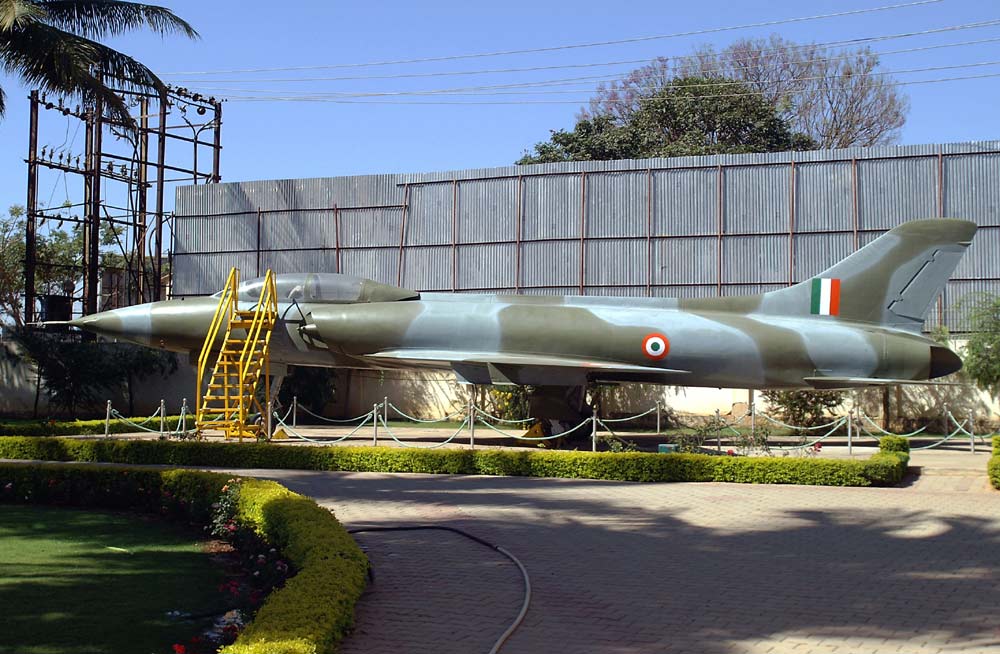The HAL HF-24 Marut, India’s first indigenous jet fighter, was a groundbreaking project showcasing significant achievements in self-reliant aerospace capabilities.
In Brief
The HAL HF-24 Marut was India’s first indigenously developed jet fighter, designed primarily for ground-attack missions. Conceived in the late 1950s and first flown in 1961, it embodied India’s entry into advanced aeronautics, combining innovative design elements like a swept-wing configuration, area-ruled fuselage, and twin-engine layout. Although it was equipped with underpowered engines which limited its performance, the Marut made substantial contributions to India’s defense and aerospace industry. Capable of carrying an array of armaments, it demonstrated commendable service in various roles, including reconnaissance and close air support, despite the limitations imposed by its powerplant.
History of the Development of the HAL HF-24 Marut
The inception of the HF-24 Marut project traced back to the late 1950s, reflecting India’s aspiration to cultivate a self-reliant defense industry. The Indian government, recognizing the strategic importance of indigenous defense capabilities, initiated the development of the HF-24 under the aegis of Hindustan Aeronautics Limited (HAL). Esteemed German aerospace engineer Kurt Tank was enlisted to lead the project, bringing invaluable expertise to India’s nascent fighter aircraft program.
The objective was clear: to produce a versatile, supersonic fighter that could serve the Indian Air Force’s (IAF) needs in various combat and reconnaissance roles. The program aimed to reduce reliance on foreign aircraft while nurturing domestic aerospace engineering skills. The Marut, meaning “Spirit of the Tempest,” first flew on June 17, 1961, symbolizing India’s burgeoning capabilities in aircraft manufacturing and military aviation.
Design of the HAL HF-24 Marut
The HAL HF-24 Marut’s design was notably advanced for its time, featuring a swept-wing configuration, which enhanced its aerodynamic efficiency and high-speed performance. The aircraft was powered by two Bristol Siddeley Orpheus engines, although the engines were considered underpowered for the airframe, limiting its ability to achieve supersonic speeds in level flight.
The Marut incorporated an area-ruled fuselage to reduce drag at transonic speeds, and its airframe was designed to facilitate straightforward maintenance and operations. The twin-engine design offered redundancy, enhancing survivability, while its armament capabilities included cannons, rockets, and bombs, making it a capable ground-attack platform. However, the aircraft’s full potential was hampered by the lack of a more powerful engine, impacting its acceleration, climb rate, and service ceiling.

Performance of the HAL HF-24 Marut
The performance of the Marut was commendable given the era and its indigenous development context. The aircraft could achieve speeds close to Mach 1, with a range of approximately 700 kilometers and a service ceiling of around 40,000 feet. Its operational flexibility was evident in its ability to conduct ground-attack, air-to-air combat, and reconnaissance missions.
Despite its underpowered engines, the Marut was praised for its handling qualities, robustness, and low-speed maneuverability. When compared to contemporaries like the MiG-21, the Marut couldn’t match their speed or high-altitude performance but offered significant operational versatility and easier maintenance, crucial for the IAF’s diverse requirements.
Variants of the HAL HF-24 Marut
The Marut was developed in a few variants, each designed to enhance its operational capabilities:
- HF-24 Mk.1: The initial production version used by the IAF.
- HF-24 Mk.1T: A two-seat trainer variant with dual controls.
- HF-24 Mk.1R: Equipped with reconnaissance capabilities.
These variants embodied incremental improvements, focusing on expanding the aircraft’s multi-role capabilities and operational flexibility.
Military Use and Combat of the HAL HF-24 Marut
The Marut was actively used by the IAF, notably in the Indo-Pakistani War of 1971, where it conducted ground-attack missions, showcasing its capabilities in a combat environment. Despite its limitations, the aircraft performed admirably, delivering ordnance accurately and demonstrating considerable survivability against ground fire. Its operational record in the conflict underscored the Marut’s potential as an effective ground-attack platform.
Post-war, the Marut continued to serve in various capacities but gradually phased out as newer, more advanced aircraft were inducted into the IAF. Its operational use provided valuable insights into indigenous aircraft development, influencing future Indian aerospace projects.
The HAL HF-24 Marut stands as a testament to India’s pioneering endeavor into indigenous fighter aircraft development, embodying the nation’s aspirations and capabilities in aerospace technology. Despite its operational limitations, primarily due to underpowered engines, the Marut played a crucial role in advancing India’s aerospace industry, leaving a lasting legacy in the annals of Indian military aviation history.
Back to the Fighter Jet section.